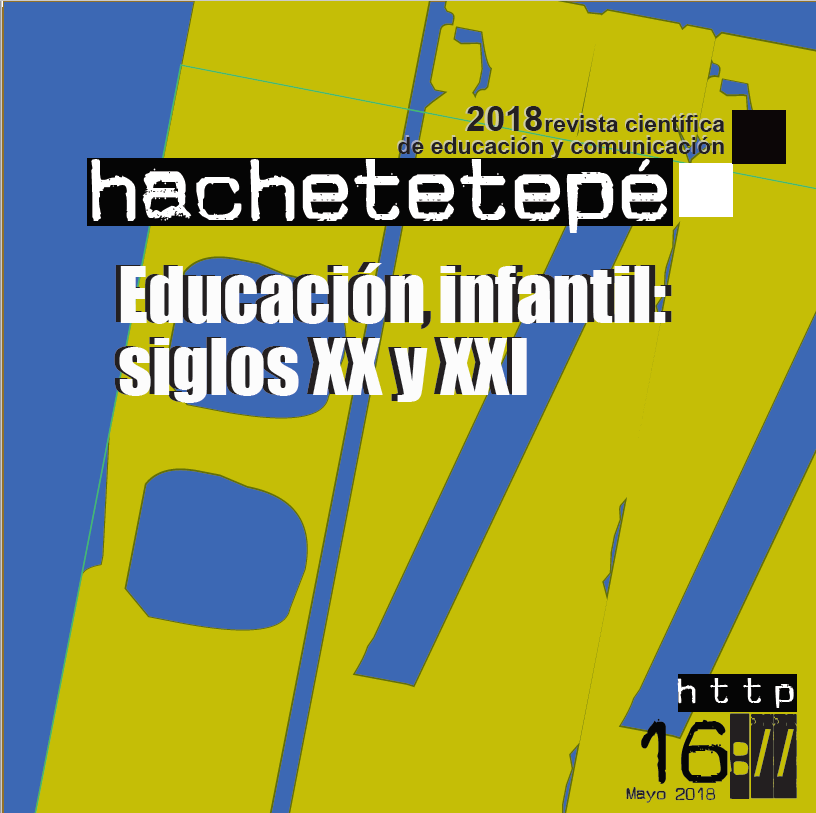The way trailed by the active pedagogy: the importance of the look of the adult to the person of the child
Abstract
The article starts from the fact that childhood has been recognized as a significant development phase by the Progressive Education movement and the active pedagogies. It examines the view an adult educator turns to a child with special needs in education. The question is complex: the reflection on the daily educational practice at school and in educational centres as well as the research in the different branches of human sciences evidence the necessity to focus on the primacy of the person of the child in the learning experience.
Keywords
Downloads
How to Cite
License

This work is licensed under a Creative Commons Attribution-NonCommercial-NoDerivatives 4.0 International License.
Those authors who have published with this journal, accept the following terms:
- They will retain their copyright and guarantee the journal the right to first publication of their work, which will simultaneously be subject to the Creative Commons Attribution License . They may be copied, used, disseminated, transmitted and publicly displayed, provided that the authorship, url, and magazine are cited, and are not used for commercial purposes. No derivative works are allowed.
- They may adopt other non-exclusive license agreements for the distribution of the published version of the work (e.g., deposit it in an institutional telematic archive or publish it in a monographic volume) provided that the initial publication in this journal is indicated.
- Disseminate your work through the Internet (e.g., in institutional telematic archives or on your website) once the manuscript is accepted, which may lead to interesting exchanges and increased citations of the published work. (See The effect of open access).
Hachetetepé. Scientific journal of education and communication does not charge a fee for the submission of manuscripts or for the publication of its articles.
References
Aucuturier, B. (2015). Il bambino terribile e la scuola. Milán: Raffello Cortina Editore.
Benvenuti, L. (2017). Educazione e pratica. En V. Salerno (Ed.). Non di solo io. Pratiche, educazione e vita buona tra Charles Taylor e Alasdair MacIntyre. Padua: libreriauniversitaria.it edizioni.
Bruner, J. (1996). The culture of education. Harvard: Harvard University Press.
Cambi, F. (2008). Le pedagogie del Novecento. Roma-Bari: Laterza.
Calvino, I. (1991). Perché leggere i classici. Milán: Mondadori.
Canevaro A. (2011). Qualche domanda e qualche risposta, e un’ipotesi di un quadro d’insieme. En A. Canevaro, L. d’Alonzo, D. Ianes, R. Caldin. L’integrazione scolastica nella percezione degli insegnanti. Trento: Erickson.
Cornoldi, C.; Terreni, T.; Scruggs, T.; Mastropieri, M. (1998). Teacher attitudes in Italy after twenty years of inclusion. Remedial and Special Education, 18; 133-142.
D’Alessio (2013). Disability Studies in Education: implicazioni per la ricerca educativa e la pratica scolastica italiane. En E. Medeghini et al. Disability Studies. Emancipazione, inclusione scolastica e sociale, cittadinanza (pp. 89-124). Trento: Erickson.
Dewey, J. (1984). Democrazia e educazione. Florencia: La Nuova Italia.
Kahn, S. (2012). Pedagogia differenziata. Concetti e percorsi per la personalizzazione degli apprendimenti. Brescia: La Scuola.
Ianes, D. (2014). L’evoluzione dell’insegnate di sostegno. Trento: Erickson.
Leoni F.; Tronchetti F. (2010). Difficoltà di lettura e dislessia: rappresentazioni, fatti e vissuti. Dislessia, Giornale italiano di ricerca clinica applicativa, 7; 131-164.
Meirieu, P. (2007). Frankenstein educatore. Azzano S. Paolo: edizioni junior.
Montessori, M. (1999). La scoperta del bambino. Milán: Garzanti.
Nota, L.; Soresi, S. (2015). Le minacce e le sfide dei nostri tempi. En L. Nota; M.C. Ginevra; S. Soresi. Tutti diversamente a scuola. L’inclusione scolastica nel XXI secolo (pp. 17-34). Padua: Cleup.
Peroli. E. (2006). Essere persona. Le origini di un’idea tra grecità e cristianesimo. Brescia: Morcelliana.
Recalcati, M. (2014). L’ora di lezione. Per un’erotica dell’insegnamento. Turín: Einaudi.
Rousseau, J.J. (1995). Emilio, o dell’educazione. Florencia: La Nuova Italia.
Sans Fitó, A. (2008). ¿Por qué me cuesta tanto aprender? Trastornos del aprendizaje. Barcelona: Editorial Edebé.
UNESCO (2009). Policy Guidelines on Inclusion in Education. París: UNESCO.
Vianello, R. (1990). L’adolescente con handicap mentale e la sua integrazione scolastica. Padua: Liviana.






